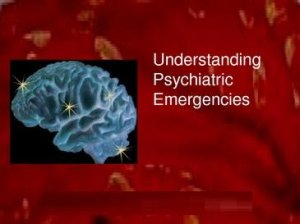
Common symptoms of this disorder include intrusive thoughts (which are more pronounced when in deep sleep), phobic avoidance (purposeful avoidance of activities that arouse the memory of the traumatic event), heightened vigilance, exaggerated startle reaction, generalized anxiety, social withdrawal and inability to function in activities of daily living.
Assessment and initial findings of individuals with post traumatic stress disorder
Assessment findings of individuals manifesting post traumatic stress disorder can normally be appreciated by a comprehensive psychiatric evaluation and a narrative of the events pertaining to the individual’s pre-trauma history, the traumatic event itself and finally the individual’s impaired posttraumatic functioning. Post traumatic stress disorder or PTSD often presents prevalent multiple readmissions to the emergency department for relatively minor or recurring complaints without profound evidence of injury. Although psychiatric evaluation is primarily the main concern of psychiatric evaluative treatment, the task of medical personnel in the emergency department focuses on supportive management roles by allowing the individual to discuss the traumatic event and allow them to grieve and express their feelings.
Signs and symptoms of post-traumatic stress disorder
The symptoms of post-traumatic stress disorder (PTSD) can arise very suddenly or in some cases gradually which can come and go over time. In some special cases, the symptoms of PTSD can appear seemingly out of nowhere and can abruptly disrupt an individual’s activity which results in agonizing feelings of anxiety and depression. At other times, they are elicited by visual, auditory, olfactory and tactile stimulus that is closely associated with the original traumatic event. The sight of blood for instance can be a traumatic recall for someone who has been a victim of a vehicular crash which can momentarily incapacitate them by breaking down in anxiety and depression. While everyone may experience PTSD differently, there are basically three main types of symptoms: (1). Re-experiencing the traumatic experience, (2). Avoidance of social interaction and reminders of the traumatic event, (3). Increased generalized anxiety and emotional instability .
Management of individuals with post traumatic stress disorder
The main goal of treatment for the individual is to organize and initiate the gradual integration of the traumatic experience so that the individual can return to his or her pre-trauma level of functioning as early as possible. Emergency management is primarily focused on the individual’s presenting behaviors. Many interventions are carried out which includes; crisis intervention strategies, establishing a trusting and sharing relationship and educating the individual as well as his or her significant others about stress management and support services that are readily available in the community. Referral for further professional psychiatric evaluation and support can be an optional alternative for individuals who want to have professional counseling from a professional such as a psychiatrist who is specifically trained in handling individuals with post traumatic stress disorder.